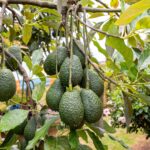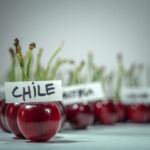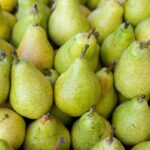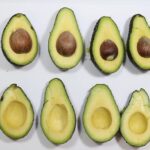What you need to know to start growing grapes

The content of this article 'Growing grapes in the home garden' was prepared by The University of Minnesota Extension and has been revised and republished by FreshFruitPortal.com.
For the latest information, check the University of Minnesota's website here.
Quick facts
- Grapes are woody perennial vines.
- Plant in full sun to provide the heat required to ripen the fruit.
- Each vine needs about 6 feet of space.
- Flowers and fruit develop on new shoots called canes.
- It is possible to get fruit one year after planting.
- Flowers are pollinated by wind and insects.
- Annual pruning is very important to keep growth healthy each year.
- Prune in spring before leaves emerge.
Growing grapes for many uses
Do you want to grow grapes primarily to cover an arbor? Then you can choose just about any grape variety that is hardy and reasonably healthy.
Do you hope to make grape juice and jelly? Several dependable easy-care varieties will fit this purpose. Juice and jelly grapes are traditionally some of the most winter-hardy varieties.
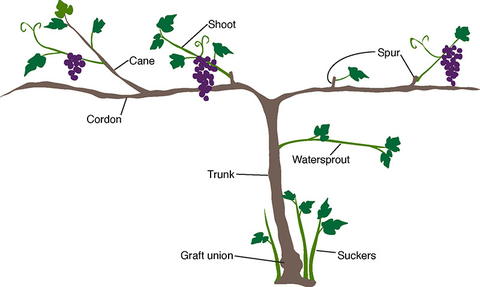
Being familiar with the various parts of a grapevine will help when it comes to growing and pruning.
Do you want seedless grapes for fresh eating? Some seedless varieties are being grown in Minnesota now, but, except in far southern Minnesota, all of these varieties will need some winter protection. Seeded table grapes are generally more cold-hardy and vigorous than newer seedless varieties.
Grapes for wine
There are now many excellent cold-hardy wine grape varieties available for commercial and hobby winemakers in northern climates. Several of these have been developed by the University of Minnesota specifically for our harsh climate.
For winemaking you will need to choose the variety more carefully, considering what varieties will make the type of wine you want, and what training and pruning they will need.
While these grapes can be eaten fresh, they generally have higher acid, higher sugar, higher skin-to-pulp ratio, and more seeds than table and juice grapes.
Choosing plants
The varieties in the table below can be used for juice and jelly and some can be used for making wine. Of course, any can be eaten fresh, and you might be surprised at the wide range of flavors!
There are other varieties available at garden centers and online nurseries that are listed as being hardy to USDA zone 4, but those listed here have been carefully tested by the University of Minnesota and have proven to grow successfully in our climate.
If you're interested in more extensive information about all of these varieties, you can find a current list of nurseries at the Minnesota Grape Growers website.
The University of California at Davis also maintains a national grape registry nursery list that includes northern suppliers. Please note that some nurseries only sell wholesale.
Varieties in bold were cultivated by the University of Minnesota and include the year they were introduced.
Managing diseases, insects and other pests
Most insect and other problems can be reduced by planting vines in a sunny location with good air circulation.
Weather conditions, winter hardiness of the variety, infection from the previous year, history of pesticide use and surrounding vegetation can affect a vine's susceptibility for a particular year.

















